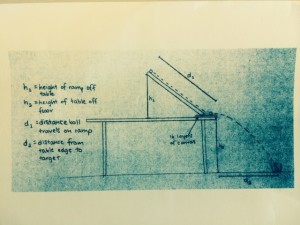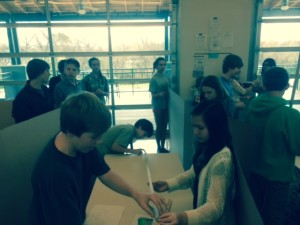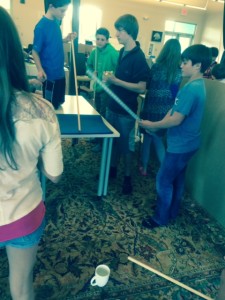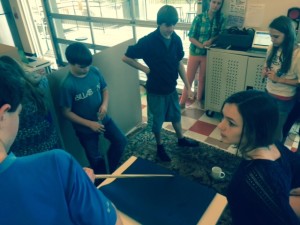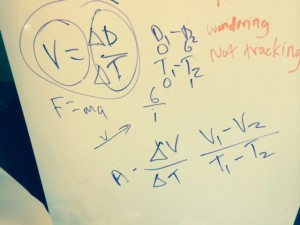Eagles seeking an apprenticeship with Google , Amazon or Apple likely will be given a difficult, open ended problem, like: “How many cows are in Canada?”
It’s not the answer that matters, but the quality of the thinking.
On Friday Eagles were challenged with a difficult physics problem. If given the experimental set up above, and d2 (the distance of the cup), can you solve for h1, the height from which to drop the ball?
No trial and error experiments were allowed. No equations or cookbook theories were offered. Eagles had only four tries at three different d2 distances, and each try was expensive (25 pts) relative to the payoff (100 pts.)
All week we worked on physics experiments that involved Newton’s Laws of Motion, the Four Fundamental Forces and the Scientific Method. Careful observation and a lot of thought might have led one college student out of a hundred to the right approach for Friday’s competition, and an equation to solve this problem, using theory alone.
Can you solve it? (Hint – consider horizontal velocity and gravity separately.)
No Eagle came up with the perfect solution. But many theories were proposed and tested. Lots of frustration. Human error turned out to be important. So did working effectively as a team. Two teams came close enough that their theories helped predict h1 during the competition.
In other words, our Eagles learned a lot about how science really works, not how it works in textbook experiments. When you become a hero charged with launching real rockets, in the real world, this distinction will make all the difference.
Who knows, it might even land an apprenticeship with a private space entrepreneur like Jeff Bezos, Richard Branson or Elon Musk.
